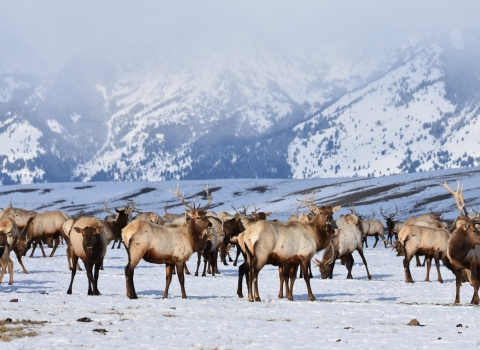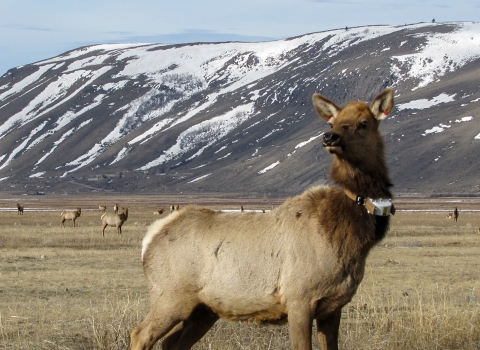Projects and Research
Using conservation best practices, the Refuge System manages Service lands and waters to help ensure the survival of native wildlife species.
Wildlife conservation is at the heart of the National Wildlife Refuge System. It drives everything on U.S. Fish and Wildlife Service lands and waters managed within the Refuge System, from the purposes for which a national wildlife refuge national wildlife refuge
A national wildlife refuge is typically a contiguous area of land and water managed by the U.S. Fish and Wildlife Service for the conservation and, where appropriate, restoration of fish, wildlife and plant resources and their habitats for the benefit of present and future generations of Americans.
Learn more about national wildlife refuge is established to the recreational activities offered to the resource management tools used. Using conservation best practices, the Refuge System manages Service lands and waters to help ensure the survival of native wildlife species.
Current and recent projects include:
- Monitoring and researching the population and distribution of the Jackson Elk Herd
- Monitoring for wildlife diseases in ungulates
- Weed mapping
- Trumpeter swan nesting season observations
- Curlew observations
- Pollinator surveys
SHORT-TERM EXTENSION OF STEP-DOWN PLAN
In 2019, the National Elk Refuge (Refuge) finalized a Bison and Elk Step-Down Plan (Step-Down Plan) that authorizes and provides management direction for bison and elk on the Refuge. The Step-Down Plan is set to expire at the end of the 2024. Currently, the U.S. Fish and Wildlife Service (Service) is continuing development of the draft Bison and Elk...
On December 16, 2020, the Wyoming Game and Fish Department’s Wildlife Health Laboratory confirmed that an elk in Grand Teton National Park tested positive for CWD. In response, the National Elk Refuge is increasing surveillance during all field operations to watch for animals displaying symptoms of CWD; euthanizing and testing...
Since 2005, the National Elk Refuge and Wyoming Game & Fish Department have been monitoring elk distribution through the use of tracking collars.
Elk location data collected from the collars help wildlife managers map elk movement and habitat use, design hunting seasons to meet objectives, monitor the effects of wolves on elk density, and evaluate the effects of elk density...
Willow, cottonwood, and aspen habitat have been greatly reduced on the southern portion of the National Elk Refuge due to decades of heavy browsing by wintering elk. This has negatively impacted habitat for cavity nesting birds, such as the Mountain Bluebird. The Jackson Hole Wildlife Foundation is helping to mitigate the loss of suitable bluebird habitat through a multi-decade long...







